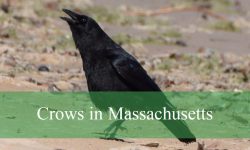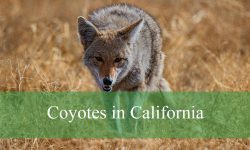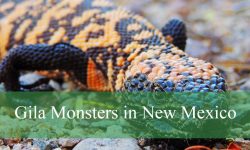When night falls over Minnesota’s forests, farmlands, and frozen lakes, a deep, haunting sound echoes through the darkness—hoo-hoo-hoo-hoo. It’s the call of the great horned owl (Bubo virginianus), one of the most powerful and adaptable raptors in North America. Known for its fierce yellow eyes, feathered tufts that resemble horns, and silent wings, this nocturnal predator reigns supreme across the Land of 10,000 Lakes.
The great horned owl is more than a symbol of mystery and wisdom; it is a fascinating bird with secrets few people know. From its incredible hunting techniques to its ability to survive brutal Minnesota winters, the great horned owl embodies the strength and resilience of nature.
In this comprehensive guide, we’ll uncover hidden facts about great horned owls in Minnesota, exploring their biology, behavior, diet, habitat, and role in the ecosystem. You’ll also learn when and where to see them, how they adapt to the northern climate, and why they’re considered the “tigers of the sky.”
What Is the Great Horned Owl?

Appearance and Size
The great horned owl is a large, stocky bird with a wingspan of up to 5 feet and a body length ranging from 18 to 25 inches. Females are typically larger than males, a common trait among birds of prey. Their plumage is a mottled blend of browns, grays, and whites that provides excellent camouflage among Minnesota’s trees and rocky landscapes.
Their most recognizable features are the tufts of feathers—often called “horns”—on their heads. While these tufts don’t have any hearing function, they play a key role in communication and camouflage, helping the owl blend into its surroundings or appear larger when threatened.
The great horned owl’s large, forward-facing eyes give it binocular vision, allowing it to judge distances with incredible accuracy. Though their eyes cannot move in their sockets, their flexible necks can rotate 270 degrees, granting a nearly panoramic field of view.
Range and Distribution in Minnesota
The great horned owl is found throughout Minnesota—from the dense boreal forests of the north to the open prairies and farmland of the south. They thrive in a wide range of habitats including woodlands, river valleys, suburban parks, and even city outskirts.
Because they are non-migratory, great horned owls remain in Minnesota year-round. Their thick feathers provide insulation against freezing winter temperatures, and they often start nesting as early as January or February, long before most other birds begin breeding.
Behavior and Adaptations
A Master of Adaptation
One of the reasons great horned owls are so successful is their adaptability. They can survive in environments ranging from dense forests and swamps to farmland and urban areas. As long as there’s a stable food source and suitable nesting site, they can thrive almost anywhere in Minnesota.
They are mostly nocturnal, hunting under cover of darkness with almost supernatural stealth. Their wings are specially adapted for silent flight, thanks to soft-edged feathers that muffle sound. This allows them to swoop down on unsuspecting prey without a whisper.
Incredible Hearing
A great horned owl’s hearing is so acute that it can detect the faint rustle of a mouse beneath several inches of snow. Their facial discs—those circular arrangements of feathers around the eyes—act like satellite dishes, funneling sound directly into their asymmetrical ear openings. This remarkable adaptation makes them elite night hunters, capable of pinpointing prey in total darkness.
Territorial and Fierce
Great horned owls are territorial and will defend their nesting sites aggressively. They often return to the same territory year after year, marking it with their distinctive calls. During breeding season, males and females perform duets—deep, rhythmic hoots that establish pair bonds and warn rivals to stay away.
Diet: The “Tiger of the Sky”
What They Eat
Great horned owls are true apex predators. They have an extraordinarily diverse diet that includes mammals, birds, reptiles, amphibians, and even other raptors. In Minnesota, their diet commonly includes:
- Rabbits and hares
- Squirrels and mice
- Skunks and raccoons
- Ducks and small geese
- Smaller owls and hawks
Unlike many birds of prey that rely on specific food sources, great horned owls eat whatever they can catch. This versatility helps them thrive in nearly every ecosystem.
Hunting Techniques
Their hunting style is both calculated and brutal. The owl will perch silently, scanning for movement with its sharp eyesight and sensitive hearing. Once prey is located, it swoops down with powerful talons that exert over 300 pounds per square inch of pressure—enough to crush bone instantly.
After capturing prey, the owl often swallows it whole. Indigestible parts like fur and bones are later regurgitated as compact “owl pellets,” which scientists study to understand their diets.
Role in Pest Control
Great horned owls are natural pest controllers. By feeding on rodents and small mammals, they help maintain ecological balance and reduce the spread of diseases carried by these animals. Farmers in Minnesota benefit greatly from their presence, as owls keep rodent populations in check without the need for harmful pesticides.
Reproduction and Family Life
Nesting Habits
Unlike most birds, great horned owls don’t build their own nests. Instead, they take over nests built by other birds, such as hawks, crows, or herons. Occasionally, they nest in hollow trees, cliffs, or even on human-made structures like silos and barns.
Breeding begins in mid-winter—often while snow still blankets the ground. The female lays 1 to 4 eggs, and incubation lasts around 30 to 35 days. During this period, the male hunts and delivers food to the nest, demonstrating remarkable devotion.
Raising the Young
Owlets hatch covered in soft down and are entirely dependent on their parents for food and warmth. Within six weeks, they begin to climb around the nest, strengthening their wings for their first flight.
By early summer, young owls leave the nest but stay close to their parents’ territory, learning to hunt and survive. They may remain nearby for several months before dispersing to establish their own territories.
Habitat and Conservation in Minnesota
Preferred Habitats
Great horned owls prefer areas with a mix of open fields for hunting and tall trees for nesting. Ideal habitats in Minnesota include:
- Deciduous and mixed forests
- River valleys and wetlands
- Farmlands with tree lines or windbreaks
- Suburban areas with large parks and woodlots
Their adaptability allows them to live even near human settlements, as long as there’s enough prey and nesting space.
Conservation Status
The great horned owl is not endangered and maintains a stable population across Minnesota. In fact, it’s one of the most widespread raptors in North America. However, threats still exist—vehicle collisions, secondary poisoning from rodenticides, and habitat destruction can impact local populations.
Minnesota’s wildlife laws protect great horned owls and their nests under the Migratory Bird Treaty Act, ensuring they remain a thriving part of the state’s ecosystem.
Great Horned Owls and Minnesota Winters
Surviving the Cold
Minnesota’s winters are long and harsh, but the great horned owl is perfectly equipped for the challenge. Their dense feather insulation and ability to fluff up their plumage keep them warm in subzero temperatures.
They also hunt efficiently during winter, preying on rabbits and mice active beneath the snow. Thanks to their exceptional hearing, they can pinpoint prey movements even under thick layers of snow and strike with deadly precision.
Early Nesting Advantage
By nesting early—sometimes in January—the great horned owl ensures its chicks have plenty of time to mature before the next winter. When most other birds are just beginning to think about breeding, these owls are already raising their young in snow-covered landscapes.
This head start gives their offspring a greater chance of survival, making them one of the earliest breeders among North American raptors.
Interesting and Hidden Facts
Fact 1: They Can Take Down Prey Larger Than Themselves
Great horned owls have been recorded preying on animals larger than themselves, including skunks, porcupines, and even small deer fawns. Their sheer strength and sharp talons make them formidable hunters at the top of the food chain.
Fact 2: They Are Silent Killers
Their flight is nearly silent thanks to specialized feathers that reduce turbulence. This allows them to ambush prey without making a sound—a critical advantage in nocturnal hunting.
Fact 3: They Have a Deadly Grip
An owl’s talons lock automatically upon impact, making it nearly impossible for prey to escape once seized. This “death grip” ensures a swift and efficient kill.
Fact 4: They Are Surprisingly Long-Lived
In the wild, great horned owls can live up to 13–15 years, while in captivity, they can exceed 25 years. Their longevity is a testament to their adaptability and dominance.
Fact 5: They Are Fiercely Protective Parents
Great horned owls are known for defending their nests with extraordinary ferocity. Even much larger predators—and humans—are not safe from their swooping attacks when they feel their chicks are threatened.
Owl Watching in Minnesota
Best Places to See Them
Minnesota offers many excellent spots for observing great horned owls in their natural habitat, including:
- Minnesota Valley National Wildlife Refuge near Bloomington.
- Itasca State Park and Chippewa National Forest in northern Minnesota.
- Whitewater State Park in the southeast.
- Sherburne National Wildlife Refuge for year-round owl sightings.
Tips for Spotting Great Horned Owls
- Go out at dusk or dawn when they’re most active.
- Listen for their deep hoots echoing through wooded areas.
- Look for large, dark silhouettes perched in trees or near open fields.
- Use binoculars or a spotting scope to observe from a respectful distance.
Remember, owls are protected by law—never disturb nests or use flash photography at night.
FAQs About Great Horned Owls in Minnesota
Are great horned owls dangerous to humans?
Not usually, but they can be aggressive when defending nests. It’s best to admire them from afar.
Do they migrate in winter?
No. Great horned owls are permanent residents in Minnesota and stay active year-round.
How can I attract them to my property?
Provide large trees for roosting and avoid using rodenticides. A healthy population of small mammals will naturally draw them.
What sounds do they make?
Their classic “hoo-hoo-hoo-hoo” call is most often heard during breeding season, but they can also hiss or screech when threatened.
Are they endangered in Minnesota?
No. They have a healthy and stable population statewide.
What should I do if I find an injured owl?
Contact the Minnesota Department of Natural Resources (DNR) or a licensed wildlife rehabilitation center immediately.
Conclusion
The great horned owl is a symbol of power, adaptability, and mystery—an apex predator perfectly suited for life in Minnesota’s diverse landscapes. From icy northern forests to quiet suburban parks, these owls dominate the night skies with unmatched precision and grace.
Understanding the hidden facts about these majestic birds deepens our appreciation for their role in the ecosystem. As natural pest controllers, parents, and predators, great horned owls help maintain ecological balance while captivating us with their haunting calls and silent flight.
So next time you hear an echoing hoot under a moonlit Minnesota sky, remember—you’re listening to one of nature’s most remarkable survivors, a guardian of the night whose secrets continue to awe and inspire.






